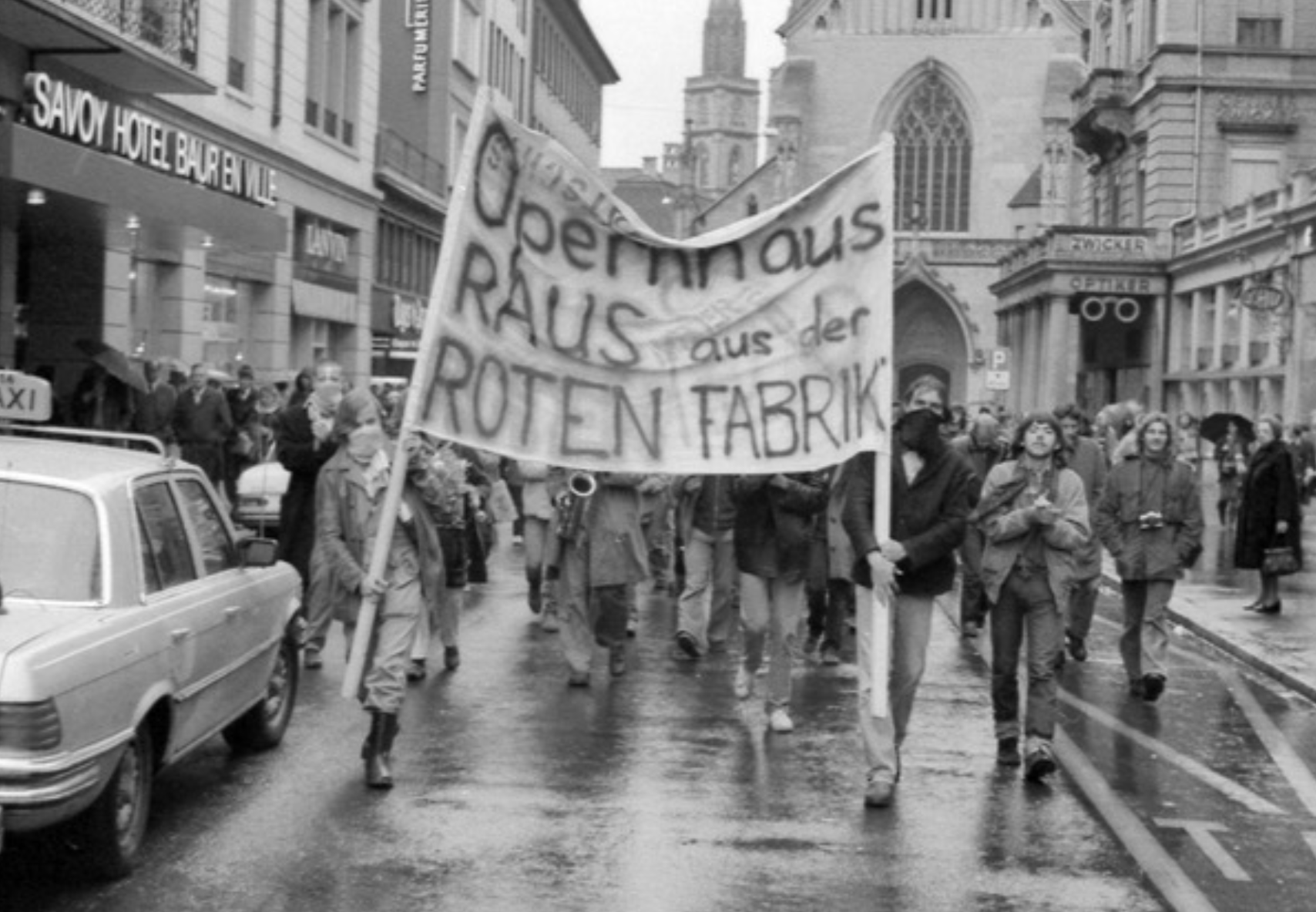Die Rote Fabrik
Caring for Material Commons in Spatial Transformation Processes
Caring for Material Commons in Spatial Transformation Processes

The history of the Rote Fabrik reveals how common practices in the form of care-taking led to the unlocking and subsequent transformation of a common-pool resource, namely the premises of the Rote Fabrik. The success of this transformation is due to a productive symbiosis of collaboration between three types of actor over a long period of time, which express their own agency through different forms of care. The three actors – namely the authorities, the community of commoners, and the building of the Rote Fabrik itself – stand in constant interrelation and tension, where top-down planning and bottom-up practices collide, but often also complement each other.
Care taking is a profound engagement with the existing world which is crucial for taking responsibility for commons. Like the commons, which can be both material (such as a fishery) and immaterial (a language), care taking can be either material or immaterial. Not only can it involve actions of physical maintenance and improvement, but it can also manifest itself in an immaterial way by engaging with existing socio-political tendencies in order to change them according to common needs and social well-being. Thus, the actions of care in the case of the Rote Fabrik address not only the physical repair and preservation of the building. They also address issues with a broader social relevance, namely providing independent cultural spaces for gathering, community, debate, and experimentation, which previously did not exist in Zurich. Care is expressed in various forms, such as protests, political debates, initiatives, financial contributions, negotiations, and many others.
Care is not only a process related to the management and sustaining of the commons. It is also something that produces commons. It produces spaces and relations. Practices of collective care create a particular spatiality with specific dimensions and organizational principles. In the case of the Rote Fabrik, the initial immaterial forms of care later turned into physical forms which produced particular spaces and architecture. Thus, the materiality and spatiality of the Rote Fabrik was shaped by the processes of care-taking and the social practices of commoning: constant collaboration, negotiation, collective experimentation, and mutual support.
Trogal, Kim. The Social Re Production of Architecture. Routledge, 2017
Fitz, Angelika; Krasny, Elke. Critical Care. Architecture and Urbanism for a Broken Planet. Architekturzentrum Wien, 2019
Anz, Philippe; Zberg Nadine; Hitzig, Daniel. Bewegung tut gut. Limmatverlag. 2021
The Opera House Riot in 1980, a Collective Care for a Change in the Cultural Life in Zürich
Rózsa, Miklós Klaus. Demonstrationszug zur Zur Teileroeffnung der Roten Fabrik. 25. Oktober 1980

Collective Care Taken by the Community for the Common Spaces
Vogler, Gertrud. Aufräumen nach ‘Taktlos’. 19.Mai.1989. Schweizerisches Sozialarchiv

Common Practices in the Rote Fabrik
Artschool F+F, 1980. Stadtarchiv Zürich.
